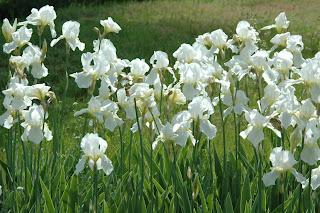
I just threw three birthday parties for my two sons in the past two weeks, and I learned a thing or two along the way. Here are some ideas for throwing a green party for children, and making the party more fun for the kids along the way.
1. Keep it small.
Limiting the number of guests will keep your child from getting overwhelmed, which helps them enjoy their party more. It also means you will have less waste and less pressure to put on a big gala. Also, fewer guests means you will more likely be able to use dishes, silverware, and other supplies that you already without having to buy disposables.
2. Keep it simple.
A short party in your backyard or at a park is all young children want. If it is a hot day, set up a sprinkler for a great time. If it is winter, set up a few games like "pin the tail on the donkey." Cake and ice cream can be the main event at any kids party. Keeping in mind what will make your child and their guests happy is key. While we want their parents to be comfortable and have a nice time, it is not about impressing them.
3. Keep it real.
Avoiding disposable products is easier than you might think. We were planning on using plasticware this weekend when we fed 20 family members, but then we counted our silverware and found we had plenty. You can almost always find a non-disposable alternative, like using cloth tablecloths instead of paper or plastic and using mason jars instead of plastic cups. And there are a lot of low-impact alternatives now when you do need to supplement with disposable stuff. We used compostable paper plates that we bought at regular supermarket and we're composting them.
4. No gifts please.
For the past few years we have put "no gifts please" on the invitations for our children's birthday parties with their friends. I like this because it takes the pressure off of parents bringing their child to the party, and it makes the party about having fun and celebrating, not on getting stuff. It also really reduces the amount of plastic we generate. Don't get me wrong, we do not want to deprive our children of the joy of gifts. Our children still get presents and really enjoy opening presents, but those presents usually come from us, their grandparents and other family.
5. Green favors.
I don't think children really care if they get party favors, and let's face it, plastic toys from the dollar store aren't really very much fun. If you do want to do party favors, think of some green choices. Small plants to watch grow or seeds that children can plant are great favors.
What are some other ideas for throwing green parties for children?








